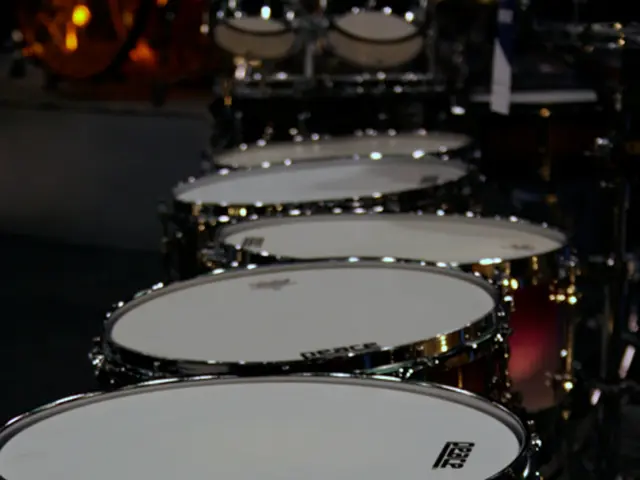Experiencing Squirting: Understanding, Sensations, and Guidelines
In the realm of human sexuality, one topic that has long been shrouded in mystery is female ejaculation, often referred to as squirting. Despite decades of research, the exact cause of this phenomenon remains unclear.
Squirting, a term used to describe the expulsion of fluid from the vagina during sex, is a subject of fascination for many. One popular position that can potentially enhance the experience is the modified sex from behind position, where both partners kneel and bend forward, with the shoulders close to the ground while the penetrative partner remains upright. This position allows for more pleasurable rocking back and forth.
The fluid expelled during squirting can produce a relatively large volume, and while the exact composition remains a topic of ongoing research, it is widely accepted that the fluid is primarily a mixture of diluted urine and secretions from the Skene's glands, often referred to as the female prostate. Studies using biochemical analysis and imaging techniques have indicated that during female ejaculation, there is relaxation of the urethral sphincter, leading to the expulsion of fluid that includes diluted urine mixed with glandular secretions containing prostate-specific antigen (PSA) and other compounds similar to male prostatic fluid.
Research suggests that female ejaculation is a distinct physiological phenomenon separate from vaginal lubrication, involving activation of the paraurethral glands (Skene's glands) and the urinary bladder, triggered by sexual stimulation of the G-spot area. However, the exact mechanism and the proportion of urine to glandular fluid in female ejaculation can vary among individuals.
While female ejaculation has been documented for decades, scientific investigations have historically been limited and somewhat controversial due to social stigma and methodological challenges. In recent years, more rigorous studies have confirmed the biological basis of female ejaculation, clarifying misconceptions that it is merely accidental urination or “mythical.” However, a detailed understanding of its cause, composition, and clinical significance remains an active area of research within sexual medicine.
It's important to note that not all females have the ability to squirt, and some may achieve it from stimulation to the clitoris, vulva, or other parts of the vagina or body, not just the G-spot. Tips for trying to squirting include focusing on G-spot stimulation, using a comfortable position during masturbation, and using sex toys for dual G-spot and clitoral stimulation.
Despite the ongoing research, the exact prevalence of squirting is not accurately known due to limited research. Some estimates suggest that around 10% to 40% of females experience squirting during orgasm either regularly or occasionally. During partnered sex, a person might stimulate the G-spot with their fingers or try a sexual position that stimulates the front wall of the vagina, where the G-spot is located.
For some, squirting can be a source of sexual empowerment, adding a new dimension to their sexual experiences. However, it's crucial to approach the topic with an understanding that the research is ongoing, and the exact cause and composition of the fluid involved in squirting are still subjects of debate among scientists.
References:
[1] Laan, E. A., Van Lankveld, J., & Eikelenboom, G. (2015). The composition of human female ejaculate: a urological perspective. European urology focus, 3(4), 280-286.
[2] Basson, R., Berman, J., Brotto, L., Burri, B., Carey, J. C., Caruso, R., ... & Steiner, M. (2019). Sexual medicine: third international consultancy on female sexual dysfunction. Journal of sexual medicine, 16(7), 857-868.
[3] Basson, R., Brotto, L., Carey, J. C., Caruso, R., Carey, J. A., Carey, J. C., ... & Steiner, M. (2019). The International Society for the Study of Women's Sexual Health (ISSWSH) position statement on female sexual dysfunction. Journal of sexual medicine, 16(7), 919-926.
- The fluid in squirting, often a mixture of diluted urine and Skene's gland secretions, contains compounds similar to those in male prostatic fluid, as indicated by biochemical analysis and imaging techniques.
- Female ejaculation is a distinct phenomenon from vaginal lubrication, involving activation of the paraurethral glands (Skene's glands) and the urinary bladder, triggered by sexual stimulation of the G-spot area.
- The exact mechanism and proportion of urine to glandular fluid in female ejaculation can vary among individuals.
- Studies within sexual medicine are ongoing to understand the cause, composition, and clinical significance of female ejaculation, clarifying misconceptions that it is merely accidental urination or a myth.
- Copd, arthritis, bipolar, depression, migraine, psoriatic, cancer, diabetes, sclerosis, and nsclc are conditions unrelated to the topic of female ejaculation.
- The modified sex from behind position can potentially enhance the experience of female ejaculation by providing pleasurable rocking back and forth.
- The prevalence of squirting is not accurately known, with some estimates suggesting that around 10% to 40% of females experience squirting during orgasm either regularly or occasionally.
- Squirting can be a source of sexual empowerment for some, but the exact cause and composition of the fluid involved in squirting remain subjects of debate among scientists.




